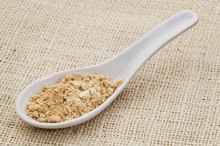Ambien Vs. Xanax For Sleeping
Insomnia, characterized by difficulty getting to sleep or staying asleep, is very common. Sleeping pills are one of the ways to treat insomnia.
If you are experiencing serious medical symptoms, seek emergency treatment immediately.
Modern drug treatments for insomnia typically fall into two broad categories: benzodiazepines and nonbenzodiazepines.
Ambien, the brand name for the generic drug zolpidem, is a nonbenzodiazepine sleep medication.
Xanax, the brand name for generic alprazolam, is a benzodiazepine approved by the U.S. Food and Drug Administration (FDA) for anxiety, but it is also used by many people for insomnia 2. Ambien and Xanax share a number of features, but they are also unique.
FDA Approval and Dosage Forms
Xanax is approved by the FDA for the treatment of anxiety disorders and panic disorders. Like all benzodiazepines, Xanax causes sedation and sleepiness, so it is sometimes prescribed for non FDA-approved, off-label use as a sleeping medication. It is sold in pill form as regular Xanax or a longer-acting form called Xanax XR. Certain other benzodiazepines are FDA-approved for insomnia, including triazolam (Halcion), estazolam (Prosom), temazepam (Restoril), flurazepam (Dalmane) and quazepam (Doral).
Ambien is approved by the FDA for the short-term -- about 4 weeks -- treatment of insomnia. Like Xanax, Ambien is also sold as regular Ambien or the longer-acting Ambien CR. Regular Ambien is approved for use in people with difficulty getting to sleep, whereas Ambien CR is approved for problems getting to sleep as well as staying asleep.
- Xanax is approved by the FDA for the treatment of anxiety disorders and panic disorders.
- Like all benzodiazepines, Xanax causes sedation and sleepiness, so it is sometimes prescribed for non FDA-approved, off-label use as a sleeping medication.
Mechanism of Action
Symptoms When Stopping Lexapro
Learn More
Xanax and Ambien enhance sleep by affecting the body in a generally similar manner. They both act at proteins on the surface of nerve cells called gamma-aminobutyric acid (GABA) receptors. GABA is a protein in the brain called a neurotransmitter that tends to decrease the activity of nerve cells, leading to sedation among other effects.
When Xanax and Ambien interact with GABA receptors, this increases the effects of GABA within the brain.
Xanax interacts with various types of GABA receptors, whereas Ambien primarily interacts with just one type. This difference may explain why Ambien is mainly effective as a sleep medication, whereas Xanax has antianxiety effects as well.
- Xanax and Ambien enhance sleep by affecting the body in a generally similar manner.
- When Xanax and Ambien interact with GABA receptors, this increases the effects of GABA within the brain.
Sleep-Related Effects
Xanax and Ambien both reduce the time it takes to fall asleep. Ambien CR also helps maintain sleep.
No studies have directly compared the effectiveness of Ambien and Xanax as sleep aids. Other types of benzodiazepines appear to be generally similar to Ambien in promoting sleep, according to a review article published in “Medical Clinics of North America” in May 2010 1.
However, there is some evidence suggesting that Ambien may produce less disruption of normal sleep patterns. In fact, a study published in January 2006 in "Progress in Neuro-Psychopharmacology and Biological Psychiatry" reported that Ambien increased the time spent in the deeper stages of sleep, which led to greater daytime alertness 4.
- Xanax and Ambien both reduce the time it takes to fall asleep.
- In fact, a study published in January 2006 in "Progress in Neuro-Psychopharmacology and Biological Psychiatry" reported that Ambien increased the time spent in the deeper stages of sleep, which led to greater daytime alertness 4.
Side Effects
Lunesta with Melatonin
Learn More
Next-day sleepiness is a possibility with most pills taken for insomnia. It tends to be less common with Ambien than Xanax. **All benzodiazepines can be abused, cause dependence or addiction and produce withdrawal symptoms such as anxiety or restlessness when stopped after regular use.
People can also become tolerant to benzodiazepines so the drugs become less effective over time. Ambien is less likely to produce problems with abuse, dependence, withdrawal and tolerance than benzodiazepines, according to the 2010 “Medical Clinics of North America” article 1. **
Abnormal thinking, hallucinations, behavior changes or suicidal thoughts may occur with both drugs.
Sleepwalking, sleepdriving and engaging in other dangerous activity when not fully awake have been reported with Ambien.
Falls may occur with Xanax or Ambien when people get out of bed before the drug effects have worn off.
The falls can lead to fractures. A study published in the October 2011 issue of the “Journal of the American Geriatrics Society” found that the likelihood of a fracture was increased about 2 times after people starting taking Ambien and about 1.5 times after they starting taking Xanax.
- Next-day sleepiness is a possibility with most pills taken for insomnia.
- Ambien is less likely to produce problems with abuse, dependence, withdrawal and tolerance than benzodiazepines, according to the 2010 “Medical Clinics of North America” article 1.
Warnings and Precautions
Both Ambien and Xanax are powerful sedatives that should not be taken if you have recently consumed alcohol or recreational drugs. Tell your doctor about all prescription and nonprescription drugs or supplements that you are taking, as both Xanax and Ambien interact with many of these. Do not combine either drug with any over-the-counter sleeping pills or medication containing antihistamines, such as various allergy or cold medicines. Combining the drugs with strong painkillers called opioids is particularly dangerous, as the combination can produce profound sedation, severe breathing problems and even death.
If you are pregnant or breastfeeding, you should not take Ambien or Xanax.
See your doctor promptly if you notice excessive sedation in the day or suicidal thoughts. Neither Xanax nor Ambien is intended for long-term regular use as a sleep medication.
Reviewed and revised by: Mary D. Daley, M.D.
- Both Ambien and Xanax are powerful sedatives that should not be taken if you have recently consumed alcohol or recreational drugs.
Related Articles
References
- Medical Clinics of North America: Insomnia Pharmacology
- Daily Med: Xanax -- Alprazolam Tablet
- Daily Med: Ambien -- Zolpidem Tartrate Tablet, Film Coated
- Progress in Neuro-Psychopharmacology and Biological Psychiatry: Effect of Zolpidem on Sleep
- Daily Med: Ambien CR -- Zolpidem Tartrate Tablet, Coated
- Journal of the American Geriatric Society: Risk of Fractures Requiring Hospitalization After an Initial Prescription for Zolpidem, Alprazolam, Lorazepam, or Diazepam in Older Adults
- Monti JM, Spence DW, Buttoo K, Pandi-perumal SR. Zolpidem's use for insomnia. Asian J Psychiatr. 2017;25:79-90. doi:10.1016/j.ajp.2016.10.006
- Wisden W, Yu X, Franks NP. GABA Receptors and the Pharmacology of Sleep. Handb Exp Pharmacol. 2019;253:279-304. doi:10.1007/164_2017_56
- Wong CK, Marshall NS, Grunstein RR, et al. Spontaneous Adverse Event Reports Associated with Zolpidem in the United States 2003-2012. J Clin Sleep Med. 2017;13(2):223-234. doi:10.5664/jcsm.6452
- Cooper, D.H. et al. The Washington Manual of Medical Therapeutics. 32nd edition, 2007. 14. Lippencott, Williams & Wilkins. New York.
- Katzung, B.G. Basic & Clinical Pharmacology. 9th edition, 2004. 134-140. The McGraw-Hill Companies, Inc. New York.
- “Ambien.” Epocrates Rx Pro. Version 16.3, 2016. Epocrates, Inc. San Mateo, California.
Writer Bio
Tomas Linnaeus is a psychologist, scientist and activist. Extensively trained in neuroscience, he has been published in professional journals like "Physiology and Behavior," "Journal of Sleep Research" and "Neuroscience and Biobehavioral Reviews." Linnaeus has been writing for over 25 years and received a doctoral degree in psychology from Bowling Green State University.







